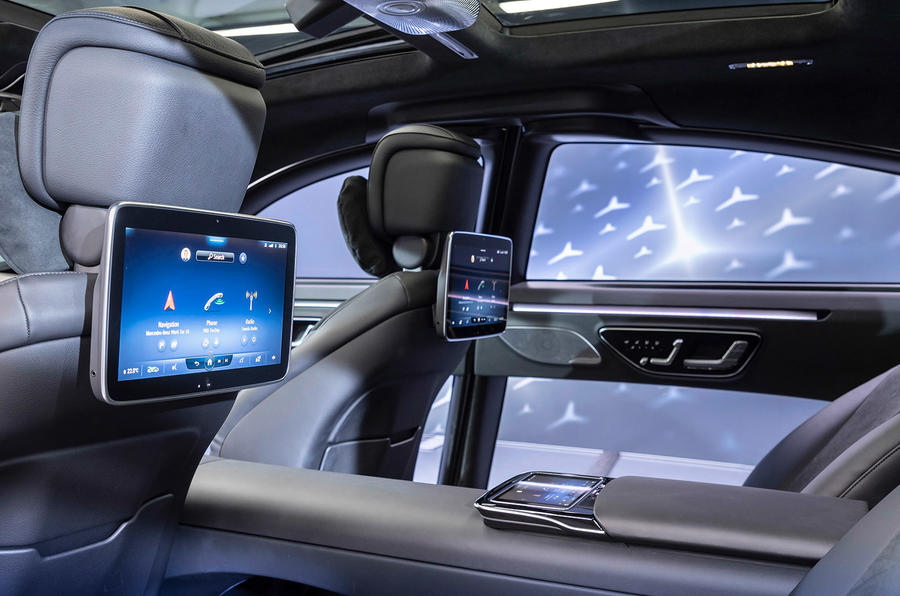
- All-new Mercedes-Benz S-class will be the first to feature the second-gen MBUX system
- Updates to the infotainment system include better voice, touch and gesture controls, automation of settings, smartphone connectivity and security
The new Mercedes-Benz S-class, which is set to debut in international markets later this year, will be the first car to feature the second generation of the Mercedes-Benz User Experience (MBUX) infotainment system.
The system is said to be ‘learn-capable’ and brings enhanced speech recognition functionality, upgraded displays and more opportunities for personalisation in both the front and rear of the car.
Mercedes notes that in the S-class’ primary markets - the US and China - the car’s owner customarily sits in the back, so it has “systematically designed the new edition of its flagship model with the rear in mind”. As such, rear passengers have access to the same infotainment functions as those in the front. There are up to three touchscreens in the 2021 S-class, each of which can be specified with OLED technology and haptic touch feedback.
Increased use of sensors plays a big part in the system’s update. The exit warning function can detect when an occupant wants to leave the car, the interior’s ambient lights flash red when another vehicle approaches a blindspot and the front passenger seat can detect whether a child seat is correctly secured.
The S-class can also automatically adjust the seats and mirrors according to suit the driver, raise and lower the rear roller blind when the driver looks over their shoulder. It can also operate the sliding sunroof based on hand gestures.
There are 27 fewer traditional buttons and switches in the new S-class compared to today's model, with a heightened emphasis on swiping, voice control and hand gestures. Some functions, such as the headlights and windscreen wipers, can be operated using familiar physical controls.
The MBUX system’s trademark “Hey, Mercedes” voice recognition function has been upgraded as well. It can now be used to explain where the car’s first aid kit is located and connect to a smartphone via Bluetooth, as well as traditional functions such as accepting a phone call or displaying the sat-nav map. If a driver says “I’m tired”, the system will activate an ‘energising’ programme, or if a rear passenger says the same phrase, a ‘wellbeing’ programme.
As part of the upgrades, Mercedes has also tightened the security of its infotainment system. As well as requiring a PIN to enable certain functions, it will use a combination of fingerprint, face and voice recognition to give access to individualised settings or verification of digital payment processes.
MBUX can be connected to the Mercedes smartphone app to allow for owners to set up to seven different profiles - with preferred automatic seat, radio and lighting settings - and activate them by scanning a QR code on entry. These can then be transferred via the cloud to other Mercedes models equipped with the same system. The cloud software also allows for Smart Home-equipped appliances and domestic systems to be controlled from within the car.
As we had reported just yesterday, augmented reality features too, projecting three-dimension directional arrows onto the road ahead to reduce the need for the driver to take his or her eyes off the road.
Expect most, if not all, the new and updated infotainment functions to make it to the India-spec 2021 Mercedes-Benz S-class, which is due next year.
Also see:
2021 Mercedes-Benz S-class PHEV to have 100km electric-only range
2020 Mercedes-Benz GLS India review, test drive
2020 Mercedes-Benz GLS video review












0 komentar:
Post a Comment